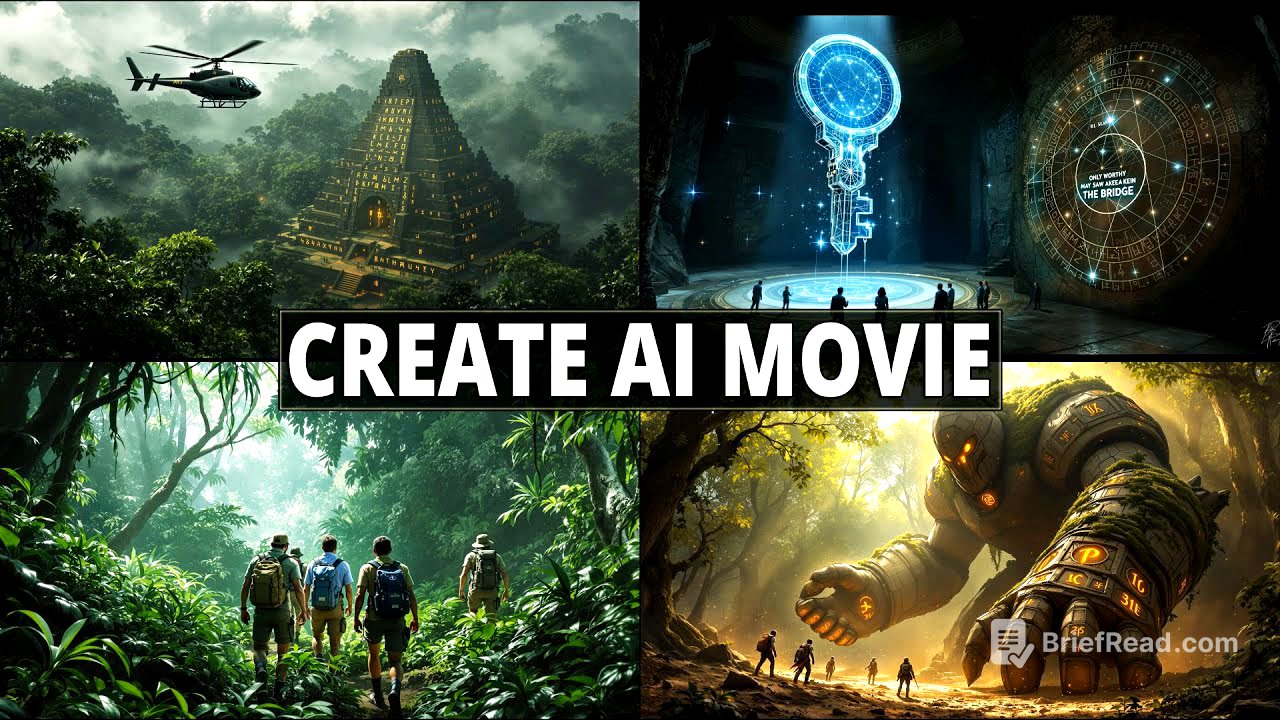TLDR;
This tutorial explains how to create AI movies from still images, covering script generation with ChatGPT, image creation using Leonardo AI, video conversion with Halo AI, dialogue generation with 11Labs, lip-syncing with Magic Hour, and final editing with Clipchamp. The process involves generating a script, creating images from prompts, converting images to video, adding AI-generated dialogues, synchronizing lip movements, and assembling the final movie.
- Generate film scripts using AI.
- Convert images into videos using AI tools.
- Synchronize lip movements with dialogues.
- Edit and assemble the final movie.
Step 1: Script Generation with Chat GPT [0:31]
To begin, a compelling movie requires a well-crafted story. Use ChatGPT to generate a short film script by providing a film idea. For example, input "write a short sci-fi film script of [your film idea]." ChatGPT will then produce a script divided into scenes, complete with characters and dialogues, providing a solid foundation for the movie.
Step 2: Image Generation with Leonardo AI [0:58]
Direct text-to-video conversion often yields inconsistent results. Instead, generate images first using Leonardo AI, which turns text into images. High-quality images require high-quality prompts, which can be obtained from ChatGPT. Input "give me the image prompts for each scene" to get detailed image descriptions for each shot in the script.
Step 3: Creating Images from Prompts [1:49]
Use the prompts generated by ChatGPT to create images in Leonardo AI. For complex scenes, divide the prompt into multiple parts to capture all elements. Copy the initial part of the prompt, paste it into Leonardo AI, select the Flux model, set the image dimension to 16x9, and generate four images. Choose the best one, upscale it, and download it. Repeat this process for all image prompts, downloading multiple images per prompt to have more options.
Step 4: Converting Images to Videos with Halo AI [3:07]
Convert the generated images into videos using Halo AI (Minimax). In the create section, select the image-to-video tab and upload an image. Enter a basic motion prompt and enable the enhance prompt button to avoid detailed motion prompts. Choose the base image-to-video model and generate the video. Compare videos from different images of the same prompt and select the best one for the film. Repeat this process for all images.
Step 5: Dialogue Generation with 11Labs [4:07]
Add dialogues to the videos using 11Labs. Sign up and select the text-to-speech tab. Choose a voice that fits the scene by browsing through the available options. Enter the dialogue or script in the text box and generate the speech. Download the audio file. For narration, use Halo AI’s text-to-speech feature, selecting a voice, emotion, speed, pitch, and volume. Generate and download the narration audio.
Step 6: Lip Syncing with Magic Hour [5:49]
Synchronize the video with the dialogue to make it look natural using Magic Hour. Sign up to speed up the processing. Upload the video and audio files, adjust the start and end points, and render the video. The tool will align the lips with the dialogue. Alternatively, use the open-source tool Wav2Lip on Google Colab.
Step 7: Final Editing with Clipchamp [7:32]
Bring everything together using Clipchamp, a free online video editor. Import all video clips, voiceovers, and narration. Drag the videos into the timeline, arrange them in the correct order, and trim unnecessary parts. Add the voiceovers and narration to the timeline. Export the movie to finalize the project.
